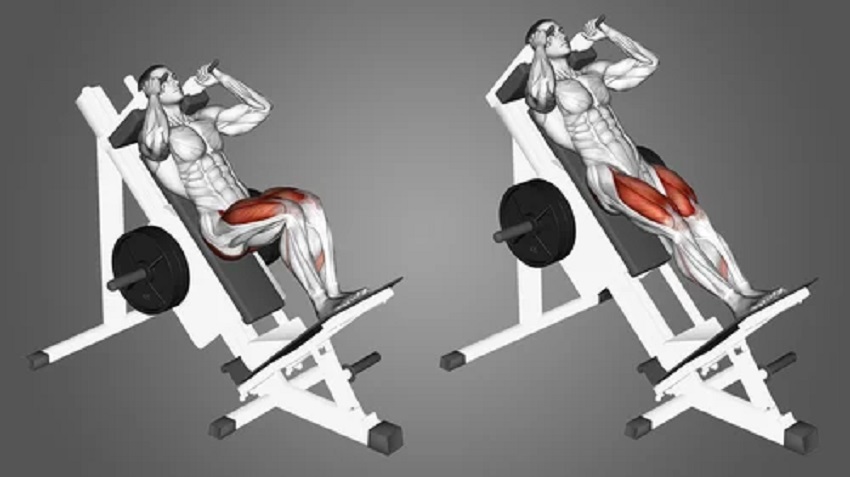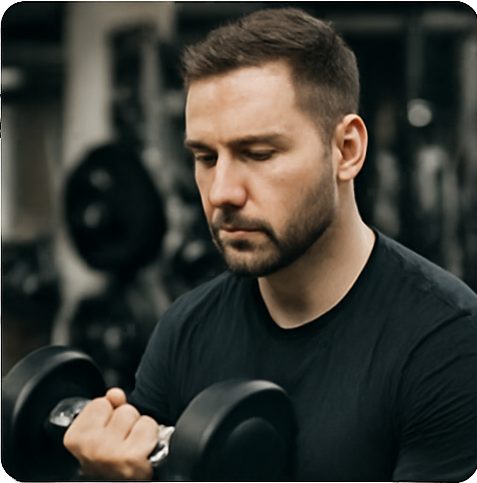The power squat machine starting weight honestly caught me off guard.
First time I used it, no plates at all — and it still felt heavy. I thought I was just having a weak day. But turns out, the sled itself has real weight. Like, 60 to 120 lbs depending on the machine.
That moment made me realize: a lot of people (me included) don’t actually know how much they’re lifting when the machine looks “empty.”
So I started digging. Asked coaches, checked labels, even tested a few models in different gyms. If you’re training seriously — especially in a busy commercial gym — that starting weight matters more than you think.
What Makes Up the Machine’s Base Weight (Unloaded)
So yeah — that “empty” power squat machine? Not actually empty.
There’s a bunch of stuff that adds to the base weight, even before you slap on plates:
- The sled – This is the big platform you push. It’s thick, heavy, and built to last.
- The rail system – Smooth glide comes at a cost — and that cost is steel. These rails aren’t light.
- Shoulder pad setup – All that padding and support hardware adds bulk too.
- The angle of the track – If it’s tilted steeply, you’re fighting gravity more from the start.
Most commercial power squat machines I’ve used clock in somewhere between 60–120 lbs unloaded. So even if it feels light, you’re still doing real work.
I used to think something was wrong with me when no-plate sets felt tough. But now I know it’s just how these machines are built.
Also — quick heads up — not all squat machines feel the same. Some types, like leverage squat machines, work totally different. The load feels smoother, and the base weight might surprise you in a different way.
👉 Here’s Leverage Squat Machine: What It Hits & How It Compares.
How I Found the Starting Weight of Mine
Honestly? Figuring out the power squat machine starting weight took more effort than I expected.
First time I used it, I just guessed. Bad idea. So I actually went on a little mission to find the real number.
Here’s what I did:
- ✅ Checked the brand tag — Looked around the machine frame and found the company name.
- ✅ Asked one of the trainers — They didn’t know off the top, but they pointed me in the right direction.
- ✅ Googled the model name — Big win. Just searched: “[Machine Name] manual PDF”. Found the specs straight from the manufacturer.
Eventually, I confirmed the starting weight was 95 lbs empty. No plates. Just the raw machine. That explained a lot.
Pro tip: Some machines actually have a little sticker or plate near the base that lists the sled weight. Definitely check that first — saves time.
So yeah, don’t assume it’s “just the machine.” That starting weight is real, and it matters — especially when you’re tracking volume or chasing PRs.
Why Starting Weight Even Matters Especially for Beginners
This messed me up early on. I’d throw a plate on each side, thinking I was warming up with 135. Felt heavy, but I figured I was just having an off day.
Nope — turns out the power squat machine starting weight was already close to 95 lbs. So I was actually grinding through 185 without realizing it. No wonder it felt brutal.
If you’re coming from barbell squats, this is a big deal. A standard bar starts at 45 lbs — and you know exactly what’s loaded. Machines? Not so simple.
It’s easy to misjudge intensity. Especially when the sled already weighs as much as a full barbell. That can throw off your whole program if you’re trying to stay consistent with load and volume.
💡 Now, anytime I program hack squats or power squats, I always factor in the sled weight from the start. Trust me — knowing the real starting weight saves a lot of guesswork and your knees.
👉 Want to see how this compares to free weight squats? Here’s my full breakdown of Hack Squat vs Squat: Which Builds More Muscle.
How I Adjust My Sets Knowing the Real Starting Weight
Once I found out the power squat machine starting weight — and how much I was actually lifting — everything clicked. I wasn’t just guessing anymore. I could finally train with some logic behind my numbers.

Here’s how I started adjusting things:
- Count the sled. Always. If your machine’s sled is 90 lbs, and you slap on two 45s, that’s 180 — not 135.
- Start lighter than you think. Especially if you’re new to this machine. Get your depth, find your groove, and lock in good form first.
- No ego lifting. Seriously. Even with “just the sled,” this machine can torch your quads. Don’t get caught chasing plates.
- Going for hypertrophy? I keep the weight moderate and chase reps. This machine loves volume work — high reps, deep stretch, nasty burn.
I treat it kind of like a finisher after heavier compound work — but when I’m beat up or recovering, it actually becomes my main lift. Super joint-friendly, but still brutal when you push it right.
Other Squat Machines I ve Tried And How They Compare
I’ve messed around with a bunch of different squat machines in the gym — leverage squats, hack squats, even Smith machine squats on leg day when racks were packed.
Each one hits a little different.
- Leverage squat machines feel super smooth and stable. Great for loading up without frying your spine.
- Hack squats? Straight-up quad killers. I use them when I want to cook my legs without worrying about balance.
- Smith squats can feel stiff, but they’re clutch when I want to isolate and just pump out reps.
Honestly, no single machine is “the best.” They just hit slightly different angles, and some feel better for your joints or your goals that day.
That’s why I rotate them in — kinda like tools in a toolbox.
👉 Here’s my full breakdown of how the power squat machine stacks up against the rest: Power Squat Machine: Level Up Leg Day Gains.
So yeah — the power squat machine is heavy, even with no plates on it. But that’s not a bad thing. It just means you’re getting real resistance right from rep one.
Once I learned to count the sled as part of my total, everything clicked. My warmups made sense. My progress tracked better. And my legs? Yeah, they felt it.
Bottom line—any solid commercial gym should include equipment like this. Just make sure you’re using it the right way—and don’t forget to factor in that starting weight when you’re logging reps.
FAQs about Power Squat Machine Starting Weight
The weight of a power squat machine can vary depending on the model and manufacturer. Typically, a standard power squat machine weighs between 100 to 200 pounds (approximately 45 to 91 kg). The machine’s robust construction, including metal framing and pad components, contributes to its weight. When purchasing or using a squat machine, consider the weight as an indication of its durability and stability. Always consult the manufacturer’s specifications for exact weight information to align with specifications or constraints in your gym setup.
A squat machine, without any additional weight or plates, generally weighs anywhere from 100 to 250 pounds (around 45 to 113 kg). This weight is inherent to the machine’s frame and any installed mechanisms designed for movement and support. Considering this “naked” weight is crucial for those who might need to move the machine frequently or when assessing floor load capacities in a workout area. It provides a base understanding of what you’re dealing with before adding any additional weights.
Most squat machines come with a set baseline resistance that might not be easily measurable in terms of weight. Some machines may incorporate levers, cables, or resistance bands that simulate a certain weight level even without added plates. Understanding this preset resistance is important for beginners to ensure they start with manageable levels to avoid injury. It’s recommended to consult the machine’s manual for specific details regarding any inbuilt weight or resistance so you can accurately gauge your starting point when planning workouts.
The starting weight on a front squat machine typically refers to the weight of any in-built bars or mechanisms without additional weight plates. This initial weight can range from about 15 to 30 pounds (approximately 7 to 14 kg). This is essential for users to know, especially beginners or those new to front squats, as it helps them gauge initial effort and appropriate progression. Using the starting weight as a baseline, users can gradually add weight plates according to strength and conditioning goals. Keep in mind, it’s essential to master proper squatting form with just the starting weight before proceeding to higher weights.

Hi, I’m the editor here at Leadman Fitness. We’re a manufacturer focused on producing top-quality barbells, plates, kettlebells, dumbbells, and strength training gear. I’ve been into sports and fitness for years, and I know my way around all kinds of gym equipment—both from using it and helping create it.
I spend a lot of time understanding the real problems people run into in the gym—whether it’s beginners trying to pick the right gear or experienced lifters looking for something more durable. I stay in close touch with our production team and talk directly with other equipment makers, so we’re always improving based on what real lifters and coaches are looking for.
What I share comes from hands-on experience—stuff that actually helps people train better, not just in theory, but in real gyms.
